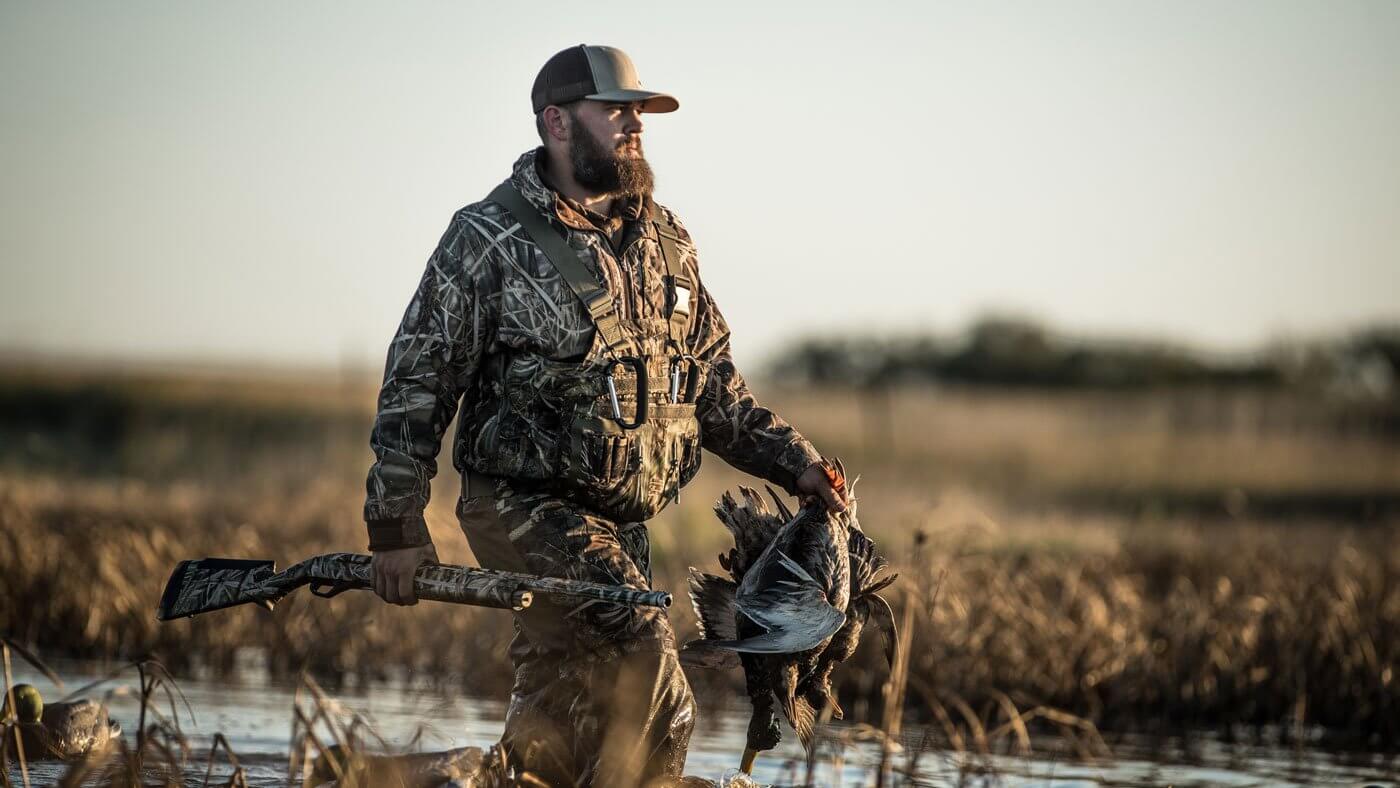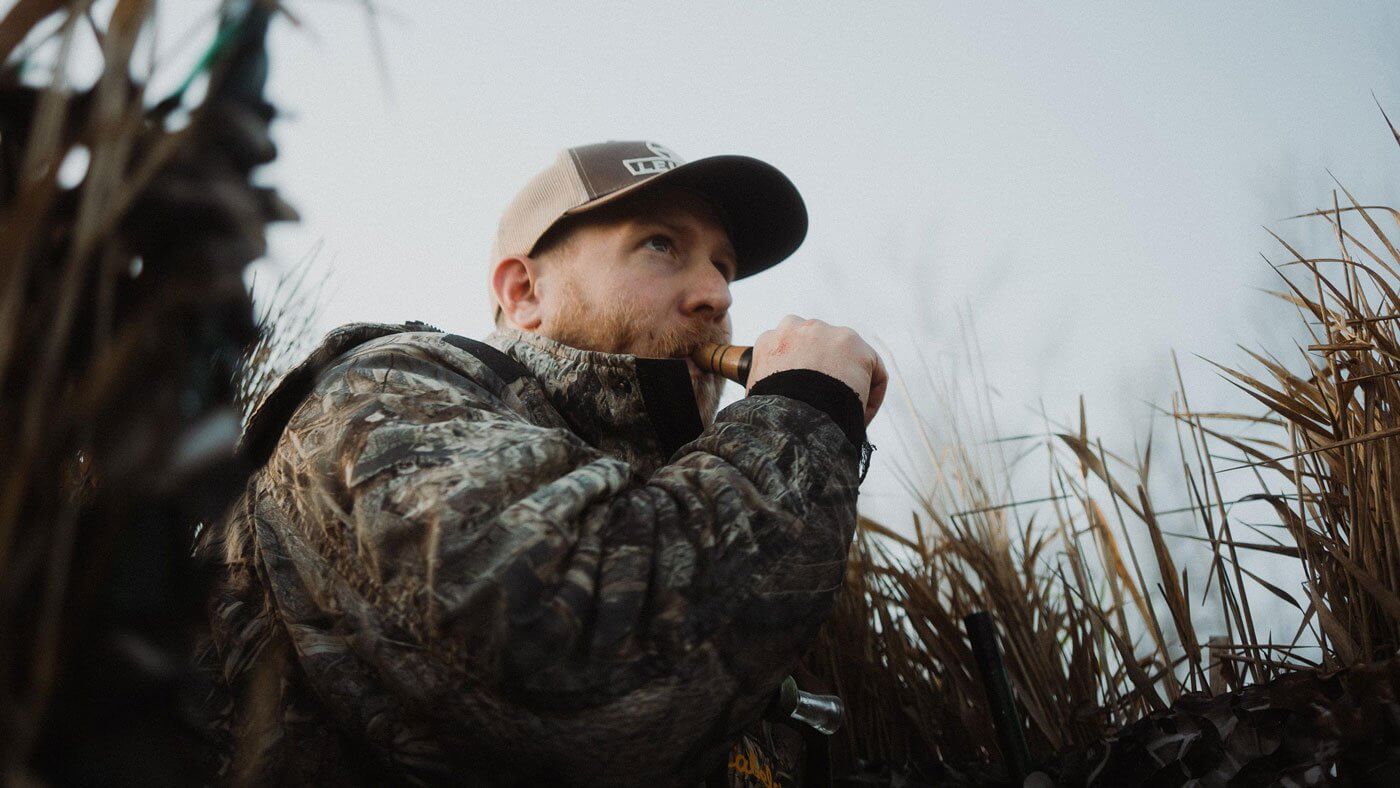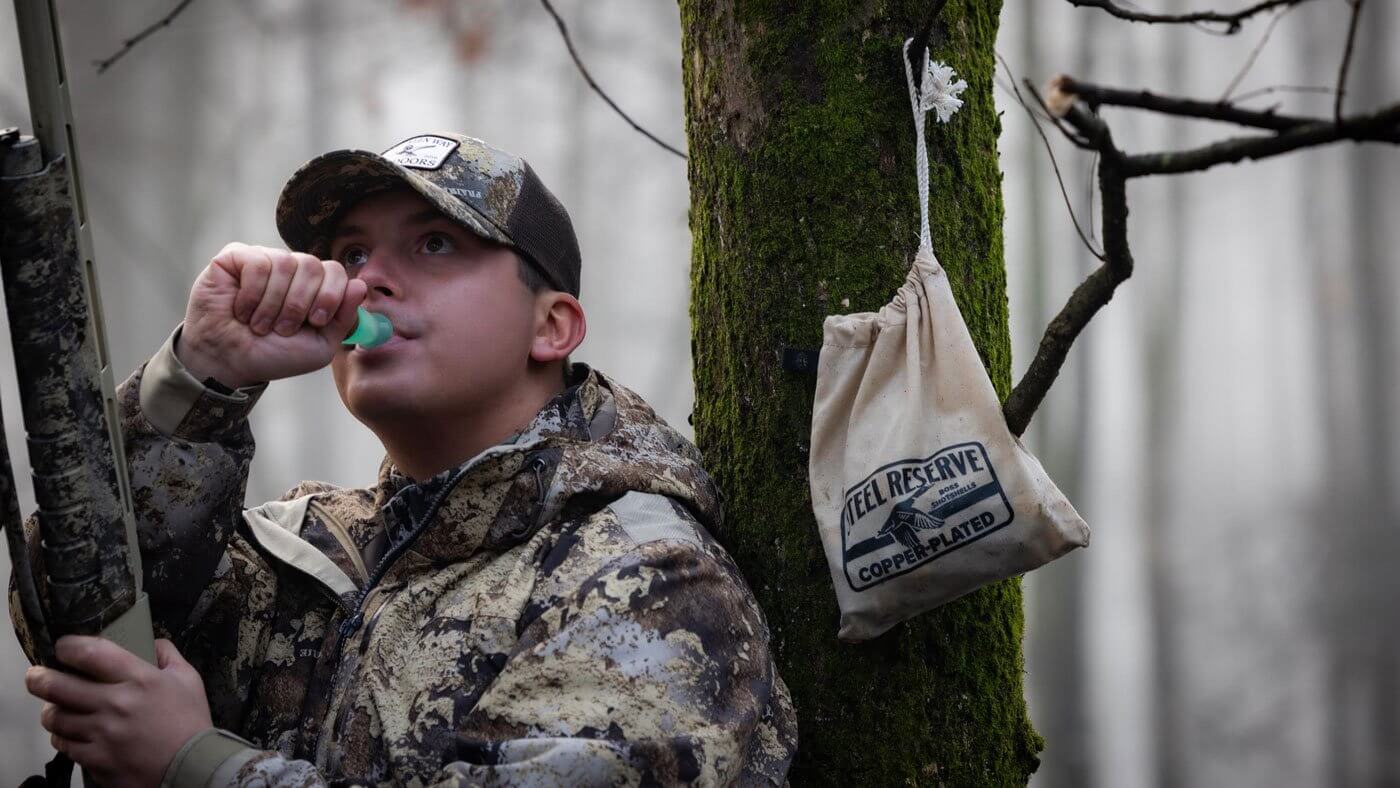- Savage Blog
- The All-Season Waterfowl Gear Guide
The All-Season Waterfowl Gear Guide

Getting into waterfowl hunting is exciting, but it can also feel overwhelming, especially when you start looking at the long list of clothing, decoys, calls, and guns that seasoned hunters use. The good news is that building a solid kit of waterfowl gear doesn’t have to be complicated. With the right essentials, you can stay comfortable, blend into your environment, and confidently work birds into your decoys whether you’re hunting marshes, ponds, fields, or flooded timber.
We’ll break down all the basic equipment you’ll need for a successful season, explain why each piece matters, and give you the info you need to confidently choose the gear that fits your hunting style and environment.
Staying Warm and Dry
Ask any waterfowler; staying warm and dry is absolutely essential. Waterfowl hunts often take place in cold, windy, and wet conditions, and nothing ends a hunt early like shivering in soaked clothing.
Jackets
A good jacket is the backbone of comfort. Look for:
- Insulated jackets to trap warmth on cold hunts.
- Waterproof and windproof shells to protect against icy rain, sleet, and wind.
Your jacket should allow layering underneath so you can adjust your layers and adapt as conditions change.
Pants and Bibs
Your lower body will be exposed to cold water, mud, and wind just as much as your upper body, so picking the right pants matters.
- Midweight fleece-lined pants are great for layering under waders and provide warmth.
- Heavier insulated bibs shine when hunting cut fields or in very cold weather, especially when you’re sitting still waiting on the next flock.
Bibs also help seal out wind drafts and prevent snow or water from creeping into your base layers.
Waders
Waders are a piece of waterfowl gear that's non-negotiable. You'll use them in almost every type of waterfowl hunt, whether you’re standing in a marsh, retrieving decoys, or walking through shallow water. Choose waders based on temperature and hunting conditions:
- Non-insulated breathable waders are best for warmer early-season hunts, or even when some unseasonably mild winter weather arrives.
- Insulated neoprene waders are excellent for cold-weather hunts on rivers, ponds, and marshes.
Make sure your waders leave enough room for warm pants underneath, but not so much that they feel baggy or restrict your movement through the water.

Perfecting Your Spread
Decoys are a great piece of waterfowl gear to help bring ducks and geese close and convince them to commit to your setup. You don’t need dozens of decoys to start, but having a small, versatile spread helps tremendously.
Duck Decoys
Consider starting with a mix of drake and hen decoys. Most hunters begin with mallard decoys since mallards are commonly found among multiple flyways, but you can always tailor your spread to fit your local duck populations. Useful decoy types include:
- Floaters for hunting over water, including ponds, marshes, rivers, and flooded timber.
- Spinner decoys that add movement and flash to your spread. A little bit of movement can go a long way to help ducks decoy into your spread.
If you plan to hunt multiple species, such as teal or gadwall, adding a few species-specific decoys can make your spread more convincing. Mix and match what you have, and see what works best!
Goose Decoys
Goose decoys will be like duck decoys with materials and positions, but they’re often larger to help mimic the size of real geese. Options include:
- Floaters for water hunts. These function the same as floater duck decoys and can even be mixed in with duck decoys to mimic mixed flocks that migrate together.
- Full body decoys for field hunts. These can be more budget friendly silhouettes or more expensive, but durable, hard body decoys.
When targeting snow geese:
- Windsocks and flags are cost-effective for creating the illusion of large flocks.
- Electronic calls can help mimic massive, noisy groups of migrating birds. These are typically only legal during the springtime Light Goose Conservation Order, so check out your local regulations before using them.

Keep Calm and Call On
Calls are an essential piece of waterfowl gear that add realism to your spread and help pull birds in, but choosing one as a beginner can be confusing. Start simple and focus on the species you plan to hunt most.
Duck Calls
Duck calls come in two major types:
- Single-reed calls
- These calls are harder to master but will provide a wider and more realistic range of tones.
- More versatile and more effective as you become an experienced caller.
- Double-reed calls
- Easier for beginners to blow and learn basic duck call tones and notes.
- Produce smooth, realistic quacks with less effort, but have a limited range.
Many common calls on the market mimic mallards, but you can also find species-specific calls readily available. Having different calls for different species on your lanyard will work well when utilizing mixed decoy flocks.
Goose Calls
Goose calls generally fall under two categories:
- Short-reed calls
- More challenging to learn. Similar to a single reed duck call.
- Capable of producing sharp, realistic honks, clucks, and moans.
- Different calls are available for different species, including specific Canada, Snow, and Specklebelly goose calls.
- Goose flutes
- Larger and easier to blow, but tend to produce deeper tones.
- Great for longer-distance calling to draw distant flocks in.
Learning calling basics takes practice, but even simple sequences can improve your hunt significantly.

Blasting Equipment
No waterfowl gear setup is complete without a reliable shotgun and the right ammunition. For new hunters, choosing the right gun can feel intimidating. Luckily, we can help break down what to look for! Let’s go over a few excellent waterfowl shotgun options.
Renegauge
The Renegauge is designed to handle waterfowl hunts in the toughest conditions. Built with our proprietary D.R.I.V. gas system, the Renegauge chews up any waterfowl load you throw at it with ease, while also reducing felt recoil. The oversize controls are perfect for operating in frigid temperatures with heavy gloves, and the AccuFit stock system makes adjusting the Renegauge to you easy for the perfect fit. The Renegauge Waterfowl features a Mossy Oak Shadow Grass Blades camo, a 3” chamber, and a 26” or 28” barrel.

Model 560 Field
The Model 560 is a great option for waterfowl hunters looking for an affordable semi-auto shotgun. Its aluminum alloy receiver helps cut down on weight while maintaining rigidity, making it reliable yet easy to swing on birds. Hunters who love a classic look will love the Turkish walnut stock, and the oversized controls are easy to use. The Model 560 has a 3” chamber and comes with a 26” or 28” barrel.

Model 320
For the hunter that just wants a bare bones, reliable shotgun, the Model 320 is the perfect choice. This pump action shotgun is reliable, affordable, and simple to use. It’s available in a 12 gauge full size model with Mossy Oak Shadow Blades Grass camo, or a compact youth model with a black stock and chambered in 20 gauge. The Model 320 has a 3” chamber and a 26” or 28” barrel in full size models and a 22” barrel in compact models.

Ammunition
Like any type of hunting, your ammunition selection when waterfowl hunting is important. Federal regulations require waterfowl hunters to use non-toxic ammunition. Your main choices include:
- Steel Shot
- Most affordable option
- Widely available from multiple manufacturers
- Effective to use for any waterfowl with the proper choke and shot size
- Bismuth
- Denser than steel, resulting in higher kinetic energy at the same shot size
- Allows smaller shot sizes than steel for a denser pellet spread
- Can be harder to find depending on the brand and area
- Tungsten
- The densest pellet for waterfowl with the highest amount of energy
- Ideal for long-range shots or hunting larger waterfowl like Canada geese
- Most expensive option
Your shot size will largely depend on personal preference and the species you’re hunting. If you’re hunting for smaller, faster ducks, a wider spread of more pellets may be required. If you’re hunting for larger and slower geese, knockdown power may be more important. Most duck hunters will stay within the #2 to #4 size shot range, while goose hunters will stick to BB, BBB, or #1 shot. Experiment with a pattern board in the offseason to see which ammo and choke combination is right for your setup.
Helpful Extras
There’s more to a good waterfowl kit than a reliable shotgun and warm clothes. Here are a few pieces of waterfowl gear that will help make your hunts more comfortable and more successful.
Dog Gear
If you hunt with a furry friend, you’ll definitely want to pick up a few pieces of extra gear.
- Dog vests for warmth, buoyancy, and protection in thick brush.
- Portable dog blinds or platforms to help conceal them and keep them comfortable between retrieves.
- Crates for safe transportation to and from the field.
Other Useful Accessories
- Call lanyards help keep your calls easily accessible and ready at a moment’s notice.
- Headlamps are useful for setting up your decoy spread and hide in the dark.
- Waterproof gloves are a must for rainy and snowy days, and when you’re setting your decoys out on the water.
- Beanie or balaclava helps retain heat and keep you warmer in the field.
- Shotshell bag for easy and convenient shell storage.
- Choke wrenches are great when you need to change your choke to deal with changing conditions, like birds that aren’t decoying well or switching from hunting ducks to geese.

Building out your waterfowl gear doesn’t mean buying everything at once. Start with the essentials: warm and waterproof clothing, a handful of decoys, a reliable shotgun, and a good call. As you gain experience and learn what works for your hunting style, you can start fine-tuning your setup.
Most importantly, good gear helps keep you comfortable and confident in the blind, so you can enjoy the hunt, make ethical shots, and focus on the incredible experiences that waterfowl hunting provides.
With the right equipment, a bit of practice, and some time spent in the field, you’ll be well on your way to becoming a seasoned waterfowler.

